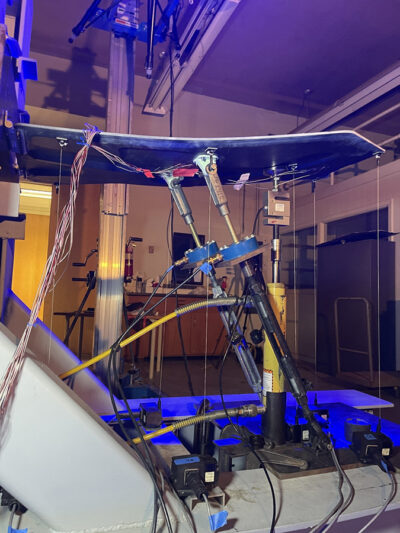Plasma research operating on many fronts
By Michael D. White and David L. Carroll|December 2016
The Plasmadynamics and Lasers Technical Committee works to apply the physical properties and dynamic behavior of plasmas to aeronautics, astronautics and energy.
Despite a sharp drop in funding for plasma actuator research for aerodynamic control, important progress has been made this year toward viable flow control systems. University of Notre Dame researchers continue in their development of plasma-based vortex generators. These generators help keep the flow attached by thickening the boundary layer. Experimental tests on a V-22 tiltrotor wing model showed post-stall drag reduction of up to 40 drag counts.
Researchers at the Air Force Engineering University in China and Xi’an Jiaotong University developed a single-power-driven multichannel discharge plasma synthetic jet actuator, or PSJA. Experiments show that a 12-element array results in six times the affected area and 64 percent of the jet velocity of a traditional PSJA.
The U.S. Air Force awarded a $4.8 million contract to Raytheon to continue work on CHAMP, the Counter-electronics High Power Microwave Advanced Missile. The CHAMP team includes the Air Force, Boeing, Raytheon and Sandia National Laboratories in New Mexico.
The Air Force Office of Scientific Research awarded a Young Investigator award to a Purdue researcher to study plasma control of flames at high pressures. This research will find its ultimate application in improving gas turbine and rocket engines.
Researchers at the University of Illinois at Urbana-Champaign have teamed up with CU Aerospace, an Illinois small business, to study improvement of methane flame stability near lean blow-off conditions by application of microwave plasma excitation in the flame region. This combined computational and experimental effort directly compares robust 3-D multiphysics simulations of an experimental apparatus with diagnostic measurements of flow field parameters, radical distributions and plasma characteristics.
Princeton University achieved backward lasing from water vapor greater than 40 percent humidity in room air by dissociation of the water molecules with a preliminary laser pulse followed by two photon pumped lasing from the hydrogen atomic fragments. The pump is at 205 nanometers and the lasing is at the hydrogen-alpha line, or 656 nanometers, which is the same color as red laser pointers. The air laser pulses are highly coherent with 10 to 30 picosecond duration and propagate in the forward and backward directions.
The Air Force Research Laboratory demonstrated a flowing diode pumped alkali laser, or DPAL, system using a potassium gas mixture with an output laser power of 1.5 kilowatts. The diode pump energy was approximately 3.1 kW, resulting in an optical-to-optical conversion efficiency of 48 percent. These laboratory researchers also demonstrated simultaneous lasing on rubidium and cesium lines in a multiline DPAL, as well as a master oscillator power amplifier configuration.
A continuous-wave optically pumped metastable argon laser was demonstrated by Emory University of Atlanta, Physical Sciences Inc. and Tufts University, both in Massachusetts, and the Lebedev Physical Institute in Moscow with an optical-to-optical conversion efficiency of 55 percent. High densities of argon were generated in an atmospheric pressure mixture of argon and helium using a linear array of micro-discharges, operating at a frequency near 1 gigahertz. Scaling efforts are underway to make larger volume discharges in high-pressure argon/helium mixtures. Promising results have been obtained using a pair of coupled linear micro-discharge arrays and a dielectric barrier discharge.
Researchers at Ohio State University have demonstrated highly vibrationally excited carbon monoxide, or CO, in ground electronic state generated by a chemical reaction between carbon vapor and molecular oxygen. The excited CO is generated at low temperatures, 260 to 350 degrees Fahrenheit, in a collision-dominated environment. The absolute population inversion is measured at molecular vibrational energy levels 4 to 7, having an average vibrational energy per CO molecule formed by the reaction that is at least 10 to 20 percent of reaction enthalpy. These results show the feasibility of developing a new CO chemical laser using carbon vapor and oxygen as reactants. ★


































